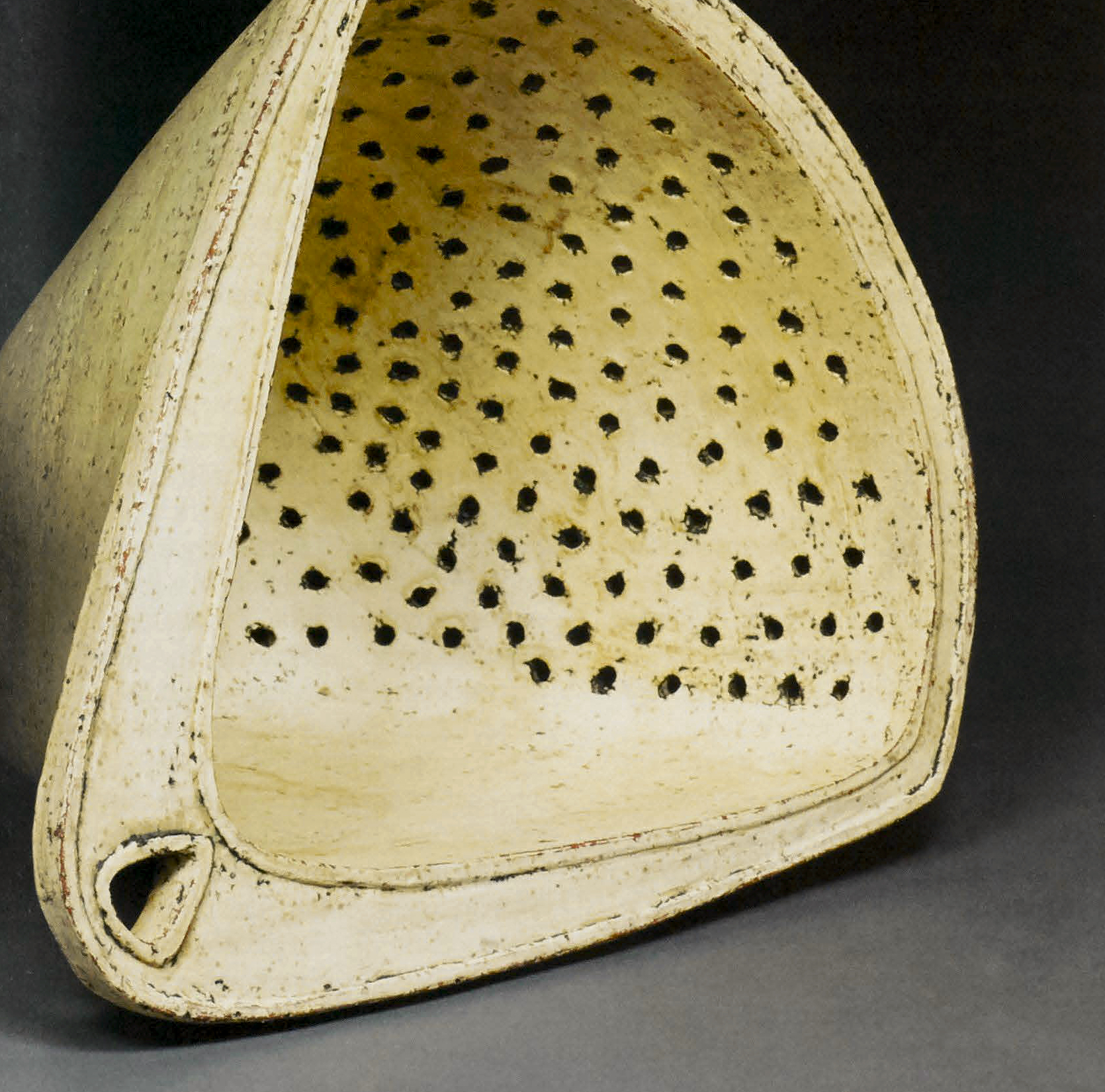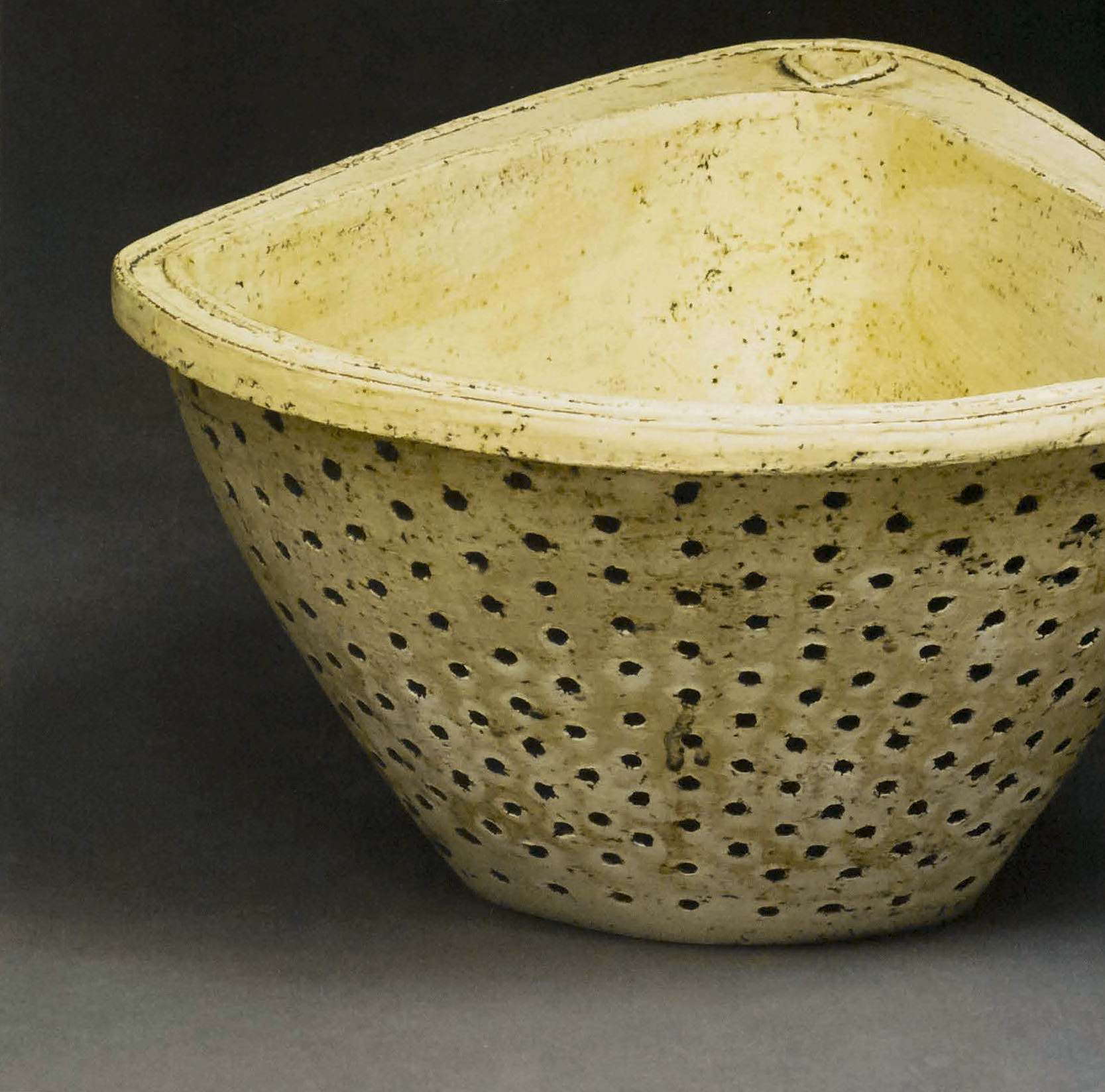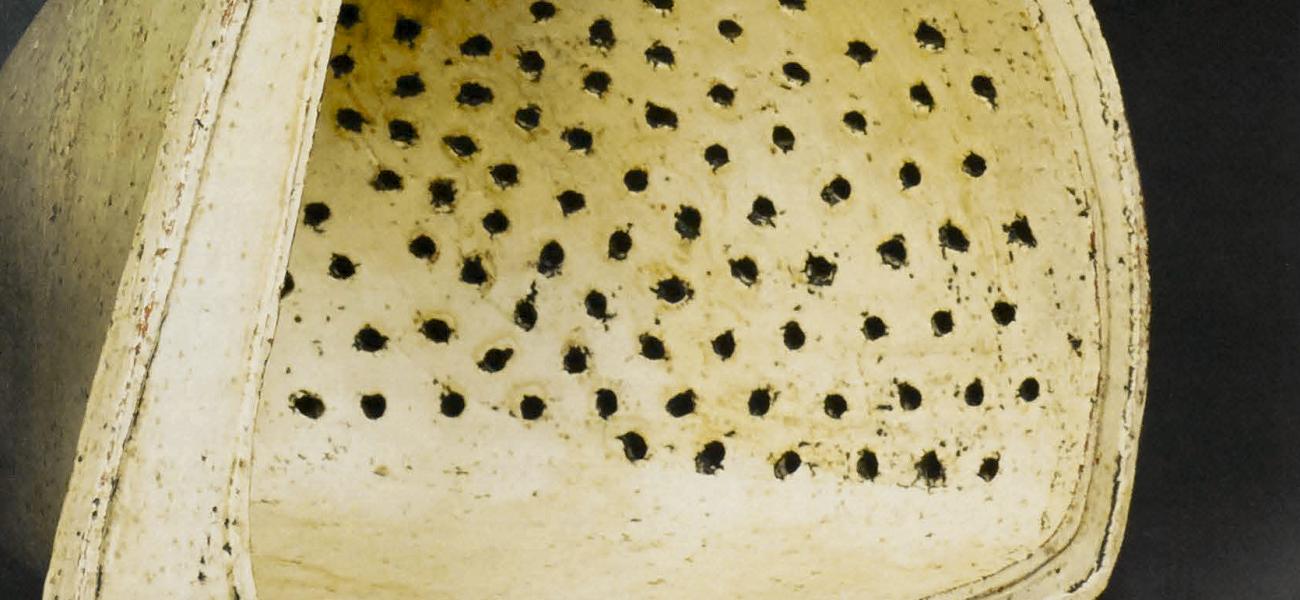Teaching the Connection
As a passionate home cook and potter, sustenance is always on my mind. "Something that sustains us" can be interpreted literally, as the food we eat; however, sustenance might also include our fundamental human need to create objects with our hands.1 The connection between food and pottery is well established and documented throughout recorded history. The earliest known examples of pottery from the Jomon culture of Japan date back more than 12,000 years. These conical cooking vessels with impressed cord textures range from simple to elaborate. They demonstrate that, even during Neolithic times, the preparation and sharing of food possessed ritual significance.
However, if we step back even further in time, it appears that food shaped us on an even deeper level. In his recent book, primatologist Richard Wrangham states that cooking played a central role in our evolution.2 He argues that cooking foods, as opposed to eating them raw, gave early humans an evolutionary edge. Cooking renders food such as grains more easily digestible and frees up calories to fuel our large brains. Over millions of years, human anatomy evolved in response to our innovatively prepared cuisine; we developed a much smaller and less energy-consuming digestive system (including smaller mouth, teeth, jaws, stomach, and colon.) Food is more than just fuel; it shaped us as a species.
Upon entering university, I became a student of anthropology and urban studies. I learned how material culture sheds light on what a society values. I simultaneously began my journey as a potter, while learning more about cooking and serving food in handmade containers. In my current role as an educator, I aim to teach my students about the commonalities between making art and sustenance.
Most of my students are not ceramics majors, and among the majors, only a handful will remain on the path to becoming potters. I believe, though, that all my students can benefit from noticing handmade objects and valuing their function. Rather than simply teaching the fine points of pottery-making, I teach concepts of use and context alongside technique and form.
On occasion, graduate students from other departments enroll in ceramics. These students bring valuable perspective to the class. Recently I had the good fortune to have a graduate student from the food and nutrition program in my class. The other students and I enjoyed hearing about her experiences teaching hands-on lessons about nutrition and cooking. Although in ceramics I deal with food in an admittedly limited way, both programs stress the value of working with our hands. Many of our students know little about food—where it comes from or what to do with it. For them, mealtime is a nagging problem to be solved rather than an opportunity to be savored. Our fast-food culture and our obsession with convenience have reduced cooking to boiling water for ramen noodles. However, some students come from families that have not lost touch with traditional food ways. Real food is beginning to make a comeback; locally grown food is gaining ground as a criterion for the cultivation of sustainable food. Farmers' markets, a plethora of cooking shows, and a growing do-it-yourself culture encourage a new generation to become more active and creative with food preparation and presentation.
Over time, students learn to cultivate a relationship between pottery-making and food. When I teach my beginning ceramics students to make bowls, this relationship may escape them. I open a dialogue about what food the bowl may contain, how it is to be used, and how that relates to the curve of the interior and the volume. If we overlook this discussion, their vessels remain as abstract as a widget or a cog.
I cannot dictate an interest in food and cooking from on high; I have greater success teaching through example. I often bring homemade baked goods into the studio to share with my students. After we get past the nostalgic smell of cranberry- almond bread, the discussion often turns to the presentation and aesthetic concerns of both the food and the pottery.
Food disarms people and slows them down, creating a perfect opportunity to discuss philosophical topics. Food puts people in the right frame of mind, and introducing function changes the discussion of the aesthetics of pots.
Ceramic serving vessels and the sharing of food with others go hand in hand. Each semester, the final project for my beginning ceramics class centers on making a serving vessel for a specific homemade dish and bringing it to a potluck supper. As a teacher, I look for ways to make art appreciation a more concrete experience for my students, relating pottery to the "real world." This assignment does that, while challenging the students to think about innovative design, aesthetics, and presentation.
While some students are at a loss for what to make, I can practically see the light bulbs switch on in the minds of others. They know what they want to cook and immediately begin working out the type of serving dish that would best accompany their food. In general, the students who struggle with the assignment do so because they don't have much cooking experience or access to a proper kitchen. Rather than let them take the easy route and bring in a store-bought preparation, I encourage them to think simply: "Can you chop fruit and make a fruit salad?" Or, "Do you have a friend who lives off-campus who would let you use her kitchen to bake brownies?"
Even if the brownies are from a box, there is something about putting in the time and effort to make a dish yourself that develops a sense of ownership. The ceramic pieces created for this assignment are often complex; they run the gamut from soup tureens to cake stands, from casseroles to deviled-egg trays. The food presented ranges from traditional mid-western fare to ethnic foods from around the world. I cannot single out the best food-pot combination from the five years I have taught this assignment.

However, I can say that nearly all the ceramic pieces rose to a new level when put to use. The potluck brings the work full circle, connecting the idea of pottery and sustenance. It allows students to interact not only with their own pieces, but also with those made by others. Without the potluck, many students would take their pieces home and relegate them to a shelf, and perhaps never experience their function.
At the potluck, as in life, the food we share nourishes us both physically and emotionally. It also feeds the social relationships that define who we are within a group. Mealtimes, from the perspective of anthropologists, are sites for socialization.
There, among other places, we begin to learn the norms and behaviors that allow us to be competent and appropriate members of a society.3 Although we usually associate socialization with childhood, the process continues well into adulthood. College students, especially those who have left home for the first time, are actively defining who they are as autonomous individuals. Athough they are influenced by their upbringing, teachers can encourage them to explore new choices of diet and lifestyle.
Of course, one assignment cannot change every student's approach to food. Still, I have seen these lessons inform the work of several of my students, including my studio assistant. Before the class, her interest in baking was limited to store-bought cake mix. Recently, she has explored baking elaborate layer cakes from scratch and presenting them on her cake stands with figurative elements. As a result of sharing her creations with others, indulgence has become the subject matter of her current body of functional and sculptural work. Although I take little credit for her development, I hope that my assignments planted the seeds of possibility.
In an age of ever-increasing speed, the dinner table is the perfect place to savor - to spend time, to share food and vessels made with integrity and purpose. I sincerely hope that such sustenance allows us to develop a deeper relationship to making, and to each other.
Notes:
1. Ellen Dissanyake, What is Art For? (Seattle: University of Washington Press, 1988).
2. Richard Wrangham, Catching Fire: How Cooking Made Us Human, (New York: Basic Books, 2009).
3. Elinor Ochs and Merav Shohet, "The Cultural Structuring of Mealtime Socialization," New Directions for Child and Adolescent Development, No. I l l , (spring 2006)

